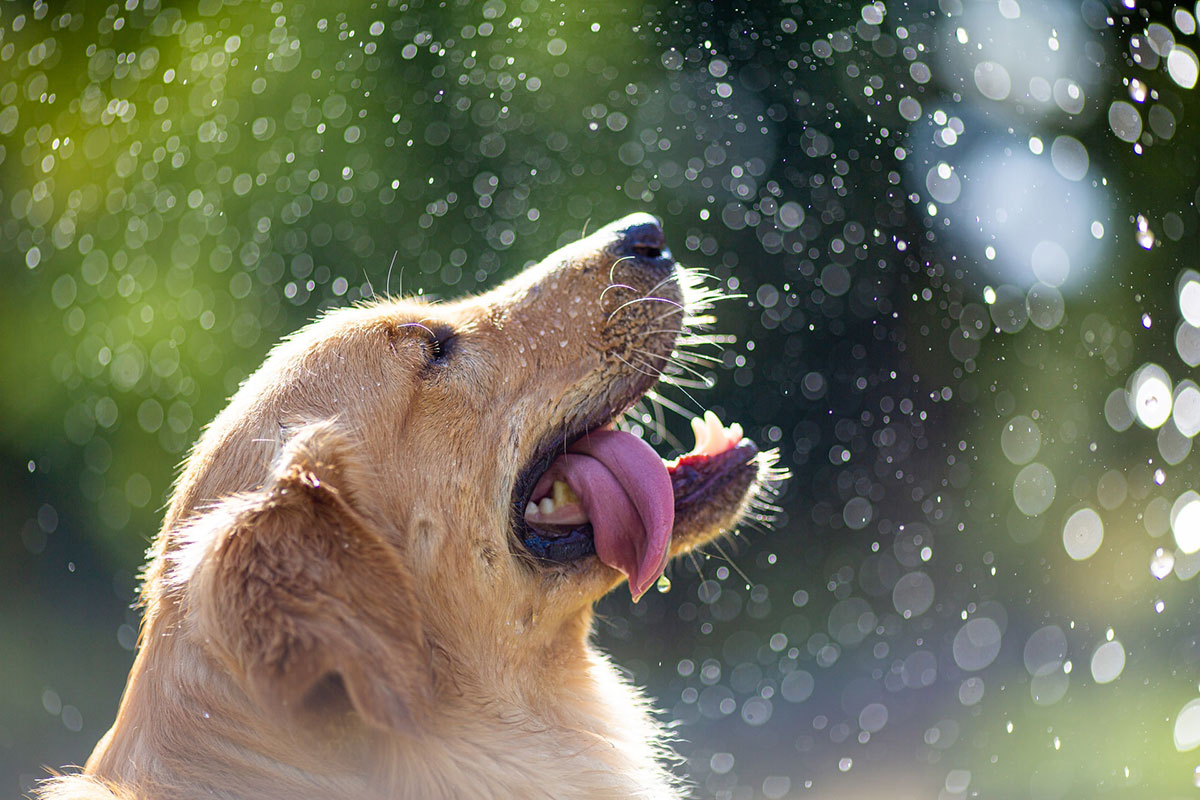Separation anxiety in dogs is a common problem. It causes a lot of stress for both the dog and the owner. Dogs with separation anxiety barking can get destructive and loud when left alone.
It’s important to understand what causes and shows anxiety in dogs. Knowing the reasons helps owners find good barking solutions. This way, they can ease their pet’s distress.
This article will look at ways to handle dog barking due to separation anxiety. It aims to help both the dog and the owner feel better.
Understanding Canine Separation Anxiety
Many dog owners struggle with canine separation anxiety. This condition affects both the dog and the owner’s quality of life. It happens when dogs feel distressed when left alone, leading to bad behaviors.
The causes of separation anxiety in dogs vary. But often, it comes from a strong bond with their owners. Changes in their environment or routine, like a new work schedule or home, can also cause it.

Dogs with separation anxiety show many symptoms. These include barking too much, destructive actions, pacing, and trying to get out. These behaviors are hard on the dog and can damage things or even hurt the dog.
It’s key to know the causes and symptoms of canine separation anxiety to help. Recognizing the signs and what triggers it helps dog owners. They can then start to make their dogs feel safer when they’re alone.
The Science Behind Separation Anxiety Barking
It’s important for dog owners to understand the reasons behind separation anxiety barking. Dogs bark when they’re left alone because they feel anxious and distressed. This is due to their strong bond with their owners.
The attachment theory helps us understand why dogs bark when left alone. Dogs form deep bonds with their owners. When they’re left by themselves, they feel anxious. This anxiety leads to barking and other anxious behaviors.

- Over-attachment to the owner
- Lack of mental and physical stimulation
- Changes in the dog’s environment or routine
To tackle separation anxiety barking, a multi-faceted approach is needed. This includes training, making environmental changes, and sometimes seeking professional help. By grasping the science behind this behavior, dog owners can start to reduce their pet’s anxiety.
Assessing Your Dog’s Separation Anxiety Level
Figuring out how much your dog worries when you’re away is key to helping them feel better. Start by watching how your dog acts when you leave. Look for signs like barking, chewing things they shouldn’t, and other behaviors that show they’re anxious.
Key indicators of separation anxiety include a lot of barking, pacing, and destructive actions. Keeping track of these can help you understand how serious the problem is. This way, you can do a detailed dog anxiety assessment.

It’s important to tell if your dog’s behavior is due to separation anxiety or something else. This means watching how they react when you’re getting ready to leave and when you’re gone. This is like a diagnosis for their anxiety.
By really looking at your dog’s behavior and how they react, you can figure out how much they worry. This helps you pick the best ways to make them feel less stressed.
Scientifically Proven Methods To Reduce Separation Anxiety Barking
To cut down on separation anxiety barking, we need a solid plan. Systematic desensitization and counterconditioning are backed by science. They help dogs feel less scared when left alone (source). These methods make dogs less reactive to things that make them anxious.
Systematic desensitization means slowly introducing the dog to being alone. It starts when the dog is not too scared. Counterconditioning makes being alone a positive thing by pairing it with something nice.
Environmental modification is also key. This can mean giving the dog a quiet spot, using white noise, or anxiety-reducing tools like calming vests or pheromone diffusers.

To really help, we need to mix these methods together. Being consistent and patient is important because changing behavior takes time. Here’s a table that shows some top methods and their benefits.
| Method | Description | Benefits |
|---|---|---|
| Systematic Desensitization | Gradual exposure to being alone | Reduces anxiety reaction |
| Counterconditioning | Associates being alone with positive outcomes | Changes dog’s perception of being alone |
| Environmental Modification | Changes to the dog’s environment to reduce anxiety | Provides a calming atmosphere |
By using theseanxiety reduction techniques, we can help our dogs feel better when we’re away. It’s all about making a plan that meets our dog’s needs and tackles their specific fears.
Systematic Desensitization and Counter-Conditioning
Systematic desensitization and counterconditioning are backed by science to help dogs with separation anxiety. These methods help dogs get used to being alone, which reduces their stress and barking.
Systematic Desensitization slowly introduces the dog to the cause of their anxiety (being left alone). It starts with a level where the dog feels okay. This slow introduction helps the dog get used to the anxiety trigger.
Counter-Conditioning works alongside systematic desensitization. It makes the dog associate the anxiety trigger (being left alone) with something good. For instance, leaving a treat-filled toy can make the dog feel happy when you leave.
To use these methods well, dog owners should:
- Begin by leaving their dog alone for short times and then increase it.
- Watch how their dog reacts and adjust the training as needed.
- Use treats and praise to encourage calm behavior.
By using systematic desensitization and counterconditioning together, owners can make their dogs feel safer when alone. This reduces separation anxiety barking. Remember, it takes time and patience for these techniques to work.
Daily Routines and Exercise to Reduce Anxiety
A consistent daily routine and enough exercise are key to lessening anxiety in dogs. Dogs love routine, and a structured day can ease their stress and anxiety.
Exercise is crucial for both body and mind. It helps use up energy that might lead to bad behavior. Activities like walking, running, or playing fetch are great. For instance, a morning walk and an evening playtime can lower a dog’s anxiety.
Mental games are also important. Puzzle toys filled with treats or learning new tricks keep their minds busy and calm. A mix of physical and mental activities can help with separation anxiety.
Benefits of Daily Routines and Exercise:
- Reduces anxiety and stress
- Improves overall mental health
- Enhances physical health
- Provides a sense of security and predictability
| Activity | Benefits | Frequency |
|---|---|---|
| Morning Walk | Reduces anxiety, improves physical health | Daily |
| Puzzle Toys | Mental stimulation, reduces boredom | Several times a week |
| Play Sessions | Burns off energy, strengthens bond | Daily |
For more tips on managing your dog’s anxiety, check out our article on how to stop dogs from barking at night.
Environmental Modifications and Anxiety-Reducing Tools
Changing your dog’s environment can help with separation anxiety. You can make their space more calming. This can reduce stress and anxiety.
Using pressure wraps and anxiety vests is a good idea. These items apply gentle pressure that can calm dogs.
Pressure Wraps and Anxiety Vests
Pressure wraps and vests use deep pressure to calm dogs. Brands like ThunderShirt and Anxiety Wrap have products that work well.
Pheromone diffusers and calming supplements are also helpful. Pheromone diffusers mimic a mother dog’s calming pheromones. This makes your dog feel safe and calm.
Calming supplements, like L-theanine or chamomile, can also help. But, always talk to a vet before adding new supplements.
By using these tools and changes, you can help manage your dog’s separation anxiety. It’s a comprehensive way to help them feel better.
Professional Interventions for Severe Cases
Dealing with severe separation anxiety in dogs requires professional help. A dog behaviorist or trainer can offer tailored advice and support. They help address the complex needs of dogs with this condition.Role of Dog BehavioristsDog behaviorists are key in treating separation anxiety. They find the root cause and create a training plan. Owners learn how to reduce their dog’s anxiety with their help.
Here are some ways professional interventions can help:
- Personalized training plans tailored to the dog’s specific needs
- Guidance on how to implement systematic desensitization and counter-conditioning techniques
- Support and monitoring of progress to adjust the treatment plan as needed
| Professional Intervention | Description | Benefits |
|---|---|---|
| Dog Behaviorist | Assessment and customized training plan | Reduced anxiety, improved behavior |
| Trainer | Guidance on training techniques | Improved obedience, reduced separation anxiety |
| Behavioral Therapy | Addressing underlying causes of anxiety | Long-term reduction in separation anxiety |
To find a qualified professional, dog owners can ask for referrals. It’s important to research and interview potential behaviorists or trainers. Make sure they have the right experience and expertise in treating separation anxiety.
By seeking professional help, dog owners can support their pets. This helps them overcome severe separation anxiety.
Conclusion
Understanding why dogs bark when left alone is the first step. Owners can then find ways to help their pets feel better. Solutions include making a routine, exercising, and changing the environment.
Using these proven methods can really help. It’s important to be patient and consistent. This way, dogs can learn to be okay when left by themselves.
Fixing separation anxiety barking needs a big plan. This plan should include many ways to help dogs feel better. By following the advice in this article, owners can make their dogs happier and healthier.






